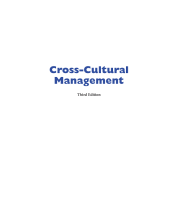Trade in Goods
20 important questions on Trade in Goods
Four functions of WTO
2) acting as a forum for ongoing Multilateral Trade Negotiations;
3) servings as a tribunal for resolving disputes;
4) reviewing the trade policies and practices of WTO member states.
The WTO has five main organs:
Some of the provisions of GATT 1994 are directly effective, which means that:
a. Both private and juridical persons can rely on these provisions in GATT 1994
- Higher grades + faster learning
- Never study anything twice
- 100% sure, 100% understanding
The
requirement that goods be “alongside” in Free Alongside Ship (FAS) trade term
(as the term is used in the Incoterms)
means the goods have:
a. been put within reach of the ship’s lifting tackle
Awards issued by an ICSID tribunal
Generalised system of preferences
National treatment rule
Affects goods inside the country (in contrast to MFN)
Export control programmes
- Australia group (curbing the proliferation of chemical and biological weapons)
- Zangger Committee
- Nuclear suppliers group (limiting proliferation of nuclear weapons)
- Missile technology control regime (limiting proliferation of missiles capable of delivering nuclear warheads)
Agreements multilateral agreement
2. Pre-shipment inspections
3. Agreement on technical barriers to trade
4. Agreement on application of sanitary and phytosanitary measures
5. Agreement on trade-related investment measure
6. Agreement on import-licensing procedures
7. Anti-dumping code
8. Subsidies
9. Safeguards
10. Agreement on agriculture, agreement on textile and clothing, agreement on rules of origin
What is a national treatment?
Once goods are legally
imported, they must
be treated the same
way as domestic
goods (no additional
requirements).
General Agreement
on Tariffs and Trade
(GATT 1994)
Annex to the Agreement
Establishing the World
Trade Organization that
sets out the rules under
which the member states
of that organization
are committed to
negotiate reductions
in customs tariffs and
other impediments to
international trade in
goods.
Bound tariff rates
The highest tariff rates
a WTO member state
may set on imports from
another member state.
Integrated program for commodities (IPC)
Proposal of developing
countries that would
establish a Common
Fund to underwrite the
costs of maintaining a
buffer stock of primary
commodities as a way to
stabilize supplies.
Agreement on the Application of Sanitary and Phytosanitary Measures (SPS Agreement)
Defines the measures
that WTO member states
may take to protect
the life and health of
humans, animals, and
plants.
Agreement on Trade-Related Investment Measures (TRIMs Agreement)
Forbids provisions
commonly found in
foreign investment laws
that distort or reduce
international trade,
including provisions
that discriminate against
foreigners and that
impose quantitative
restrictions on the use
of foreign products by
foreign-owned local
enterprises.
Agreement on Import-Licensing Procedures
Requires that the importlicensing
procedures of
WTO member states
be neutral in their
application and that they
be administered in a fair
and equitable manner.
Agreement on Implementation of Article VI of GATT 1994 (Anti-dumping Code)
Agreement on
Implementation of
Article VI of GATT
1994 (Anti-dumping
Code)
Allows WTO member
states to counter
dumping through the
application of antidumping
duties.
Agreement on Subsidies and Countervailing Measures (SCM Agreement
Classifies subsidies as
prohibited, actionable,
and nonactionable;
forbids the first class and
allows affected WTO
member states to request
consultation, to obtain a
remedy from the WTO, or
to impose countervailing
duties independently.
Agreement on textiles and clothing
Establishes a process
for the phasing-out
of existing special
arrangements governing
international trade in
textiles and clothing and
the integration of those
products into the GATT
system.
Agreement on rules of origin
Establishes a threeyear
program aimed
at bringing about an
international system
of harmonized rules of
origin.
The question on the page originate from the summary of the following study material:
- A unique study and practice tool
- Never study anything twice again
- Get the grades you hope for
- 100% sure, 100% understanding
































